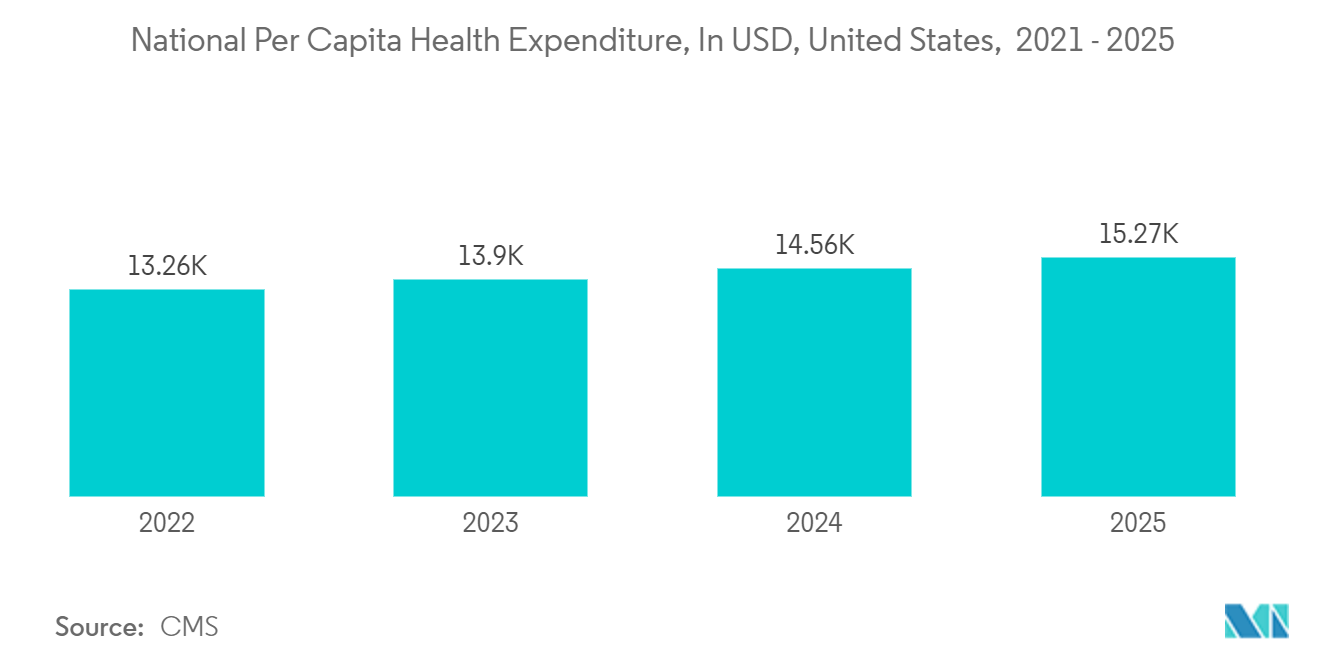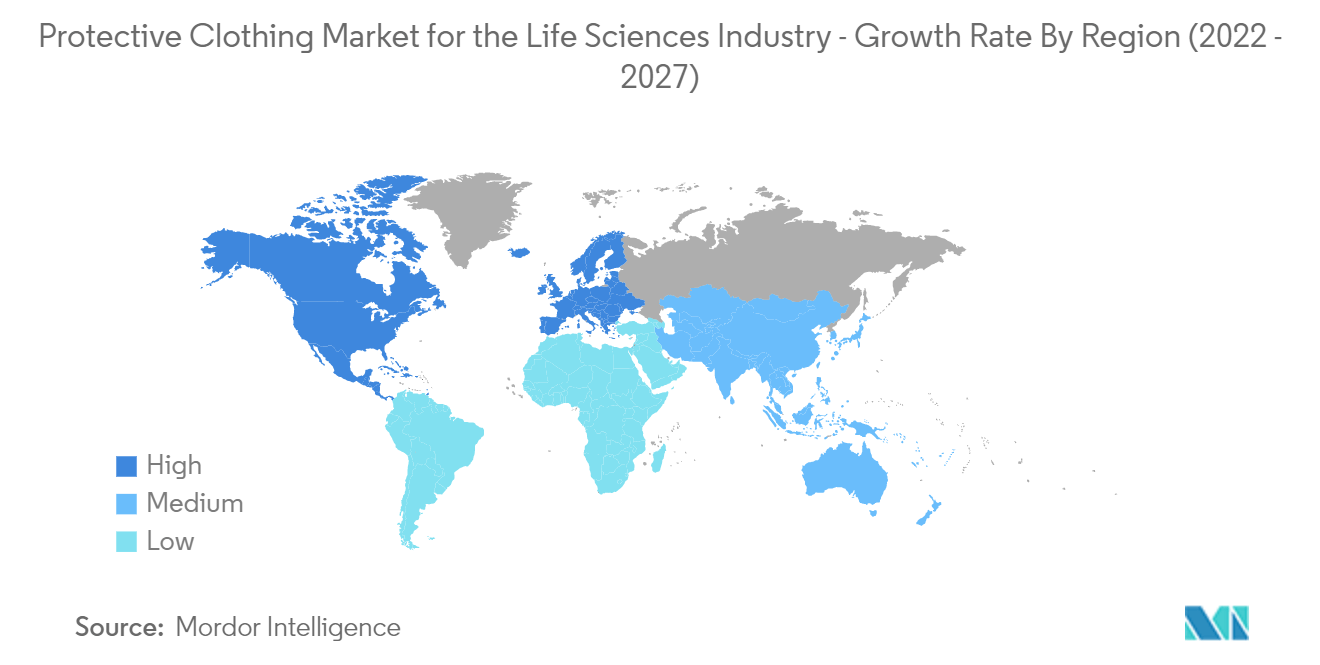Market Trends of Protective Clothing Industry for the Life Sciences Industry
Increasing Use of Protective Gloves is Boosting the Demand of the Market
- Gloves are among the items that are mostly used as single-use items. Gloves are worn when there is the risk of exposure to bodily fluids, secretions, blood, or excretions, or while handling contaminated equipment. Healthcare professionals, such as doctors, nurses, and laboratory technicians, are at high risk of exposure to such hazards.
- Chemical-resistant gloves protect against peroxide, rocket fuels, very corrosive acids (like nitric acid, sulfuric acid, hydrofluoric acid, and fuming nitric acid), strong bases, alcohols, aldehydes, ketones, esters, and nitro compounds.
- Natural (latex) rubber gloves are a popular general-purpose glove because they are comfortable to wear. Their tensile strength, flexibility, and temperature resistance are all exceptional. These gloves protect employees' hands against most aqueous solutions of acids, alkalis, and salts wear. Their tensile strength, flexibility, and temperature resistance are all exceptional. These gloves protect employees' hands against most aqueous solutions of acids, alkalis, and salts. Their tensile strength, flexibility, and temperature resistance are all exceptional. These gloves protect employees' hands against most aqueous solutions of acids, alkalis, salts, ketones, and abrasions generated by grinding and polishing.
- In the healthcare field, more people are using gloves to protect themselves from pathogenic microorganisms because more workers know how important it is. Because there is a high demand for gloves and it is relatively easy to get into this market segment, there are now a lot of companies selling gloves.
- Gloves are designed to be changed whenever they become contaminated, which may be between patients or during different procedures on the same patient. Hands should be sanitized after the removal of gloves. The OSHA Regulation on Occupational Exposure to Bloodborne Pathogens requires healthcare institutions to provide handwashing facilities to employees and ensure that they wash their hands immediately or as soon as feasible after removing gloves. It even calls for employers to offer hypoallergenic gloves at no cost, thus creating opportunities for vendors with such products in their portfolio.

North America is Expected to Witness a Significant Market Share
- One of the factors influencing employment in the US is the biosciences sector. Venture capital investments and job development across the entire life sciences sector drive the US biotechnology business. Additionally, the biopharma sector contributes significantly to job growth, making it a crucial sector.
- Because of the pandemic, there were severe shortages of PPE, which was a big problem for the nation's healthcare system. The government was at the forefront of the fight against the COVID-19 pandemic because it did not have any infrastructure for protective gear. Because of this, the country had to stop sending protective clothing abroad and start getting it from other countries.
- North America sends most of its technical textiles and protective clothing to Brazil, South Korea, India, China, and Taiwan. Increased safety awareness and laws requiring the use of protective garments. In addition to the major manufacturers, small businesses are also concentrating on creating cutting-edge protective apparel that is used to make safety gloves and jackets.
- Although PPE kits were meant to be disposed of, importing these items met with serious issues when they were washed and repackaged for re-use. The penetration of such duplicate products led the FDA to launch an investigation. The FDA released a notice recommending health care facilities and providers not to purchase imported medical gloves or products from companies listed in its list of import alerts to restrict further penetration of used disposable medical gloves and N95 respirators.
- Most healthcare centers work as chains, so it's likely that business will be better for suppliers who can reach all of North America and offer products for health imaging, sterile processing, surgical operations, and patient handling. They are expected to go for a one-stop purchase with discrete delivery benefits. With field representatives and distribution centers across the countries, the suppliers can be more attentive and provide one-on-one service, making a huge difference in the market.


